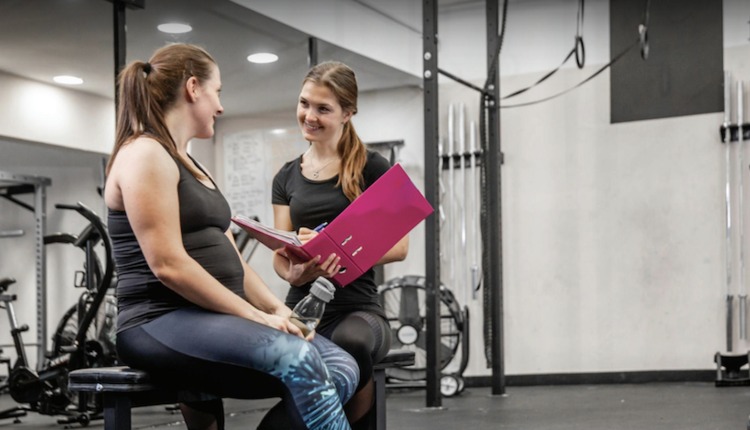
You may recall working with a client that sometimes lacked motivation, signed up to work with you then disappeared for a while or missed appointments. Maybe they lost or forgot things often, had difficulty focusing or appeared like their head was in the clouds. This is not a reflection of you or a lack of interest or desire on their part. It may be because your client's brain operates, processes and they behave differently from the societal “norm,” a concept known as neurodivergence.
What Is Neurodivergence?
Neurotypical — someone who learns and develops skills similar to their peers in society. They can tolerate change, routine disruption and distractions with little difficulty.
Neurodivergent — anyone who processes things different from the perceived norm. This is not a specific mental health condition, learning or behavior disorder but rather comes from neurodevelopmental origin with long-term traits that do not change over time. People who consider themselves neurodivergent may have a diagnosis of autism spectrum disorder (ASD), tourette's syndrome, attention deficit hyperactivity disorder (ADHD), learning processing disorder and/or dyslexia among others.
Neurodiversity — an umbrella concept that moves away from labeling normal and abnormal and shifts focus to a spectrum of how each brain works, embracing all differences. There are no two brains the same, and thus there is no right way to view and experience the world around us. Neurodivergence encompasses everyone who veers slightly or significantly off-course from societal norms. With neurodivergence so broad, and ADHD a common neurodevelopmental disorder, there are things you need to know to be successful in training your neurodivergent ADHD clients.
Not Just a Wild Child
It’s believed that the estimated 4.4% of American adults with ADHD is an underrepresentation of how many adults actually have it. The Centers for Disease Control and Prevention (CDC) estimates 9.8% of children aged 3-17 received a diagnosis of ADHD, with the majority being boys at 13% compared to 6% of girls who received the diagnosis. It’s believed that girls and women go under the radar and are underdiagnosed with ADHD, presenting with inattentive characteristics as opposed to classic hyperactive presentation. Untreated ADHD can lead to low self-esteem, depression, anxiety, forgetfulness, shame, impatience, problems at work, home and in relationships. Reaching out to you as their trainer for help, may seem a simple task to you, but could have been a mountain for someone that is neurodivergent to overcome.
ADHD Starts in the Brain
Research has identified many attributing differences in ADHD brains including size and activity of some areas in the brain, neuron development and maintenance, as well as neurotransmitter dysfunction. Some areas of the ADHD brain develop faster and are more active, while some areas develop slower and are less active.FAST: The motor region develops more rapidly, perhaps why we see more restlessness and fidgeting.
SLOW: Areas that mature slower, include the amygdala, accumbens and hippocampus, areas responsible for emotion regulation, working for reward and motivation respectively. The frontal lobe also develops more slowly, an area responsible for organization, attention and planning, as well as social skills and impulse control.
Neurotransmitters like epinephrine, serotonin, norepinephrine and dopamine help regulate these complex brain messaging circuits and are involved in the stress response as well as conditions like depression and sleep disorders. Studies have supported the theory that the imbalances or deficiencies of these neurotransmitters, particularly norepinephrine and dopamine, cause symptoms of ADHD. These imbalances lead to difficulties with executive functioning skills leading to difficulty with attention, focus, concentration, memory, impulsivity, hyperactivity, organization, social skills, decision-making, planning, motivation, task-switching and transitions, working for reward and learning from past mistakes. Effective treatment options, like stimulants, aim to increase the availability of norepinephrine and dopamine in the brain, improving executive functioning and reducing symptoms. Although more research is needed, exercise is gaining momentum as an alternative or complementary treatment option for ADHD. Here’s why:
How does exercise impact the brain?
- Moderate to high-intensity exercise boosts neurotransmitter levels
- Stimulates the vagus nerve to help restore calm, allow focus on problem solving and regain executive function control after times of high stress
- Boosts brain-derived neurotrophic factor important for brain development, plasticity, learning and memory processing
- Releases those feel good endorphins that help boost mood, reap rewards and improve stress reactivity Reduces impulsivity and hyperactivity, improves attention control and executive functioning
- Effects are cumulative! Meaning the longer you exercise, the more lasting benefits you may gain
How to Help Your Clients Be Successful
Training neurodivergent clients requires an in-depth knowledge of their unique individual needs, barriers and skills. Tap into their superpowers and find out what their kryptonite is. ADHD often leads to an ability to hyperfocus, and people are creative, spontaneous and resilient conversationalists with high energy. Dive deep into what your clients' challenges were in previous workout programs.
The Planning
ADHD minds can wander, and time blindness is real. Set time limits to prevent underestimating how long an activity may take them. Work out for time. The use of timers can be a reminder to move to the next exercise and to refocus. Create checklists for your clients’ home workouts — the dopamine hit from checking things off a list should not be overlooked. Create a personalized program that is both engaging and stimulating to prevent boredom.
The Workout
Provide structure and variety in a program that delivers both cardiovascular and non-cardiovascular exercises for full benefits. Nod to you, HIIT workouts! Target the CDC guidelines of 150 minutes of moderate intensity activity (60-80 percent of maximum oxygen consumption, VO2max) divided into 30-40 minute sessions, 4-5 times per week.
The Cooldown
Integrate relaxation techniques into cooldown routines. Breath work, imagery and yoga are all beneficial techniques. Practicing these skills regularly during cooldowns and on rest days may help your client better utilize these techniques when big emotions arise and emotion regulation is challenged. Reward your client with positive feedback. Recognize the challenges they have overcome and progress made. After all, progress is progress, no matter how small.
Jordon Hvizd, a health and wellness advocate as co-founder of ActiveRx Ventures, Medical Writer, Physician Assistant, and Registered Health and Exercise Professional Personal Trainer. She combines her passions, training, and purpose to create health and fitness content and personalized training programs for clients across the continuum of care. Follow her on Instagram @jordonhvizd or connect on LinkedIn @JordonHvizd.
















